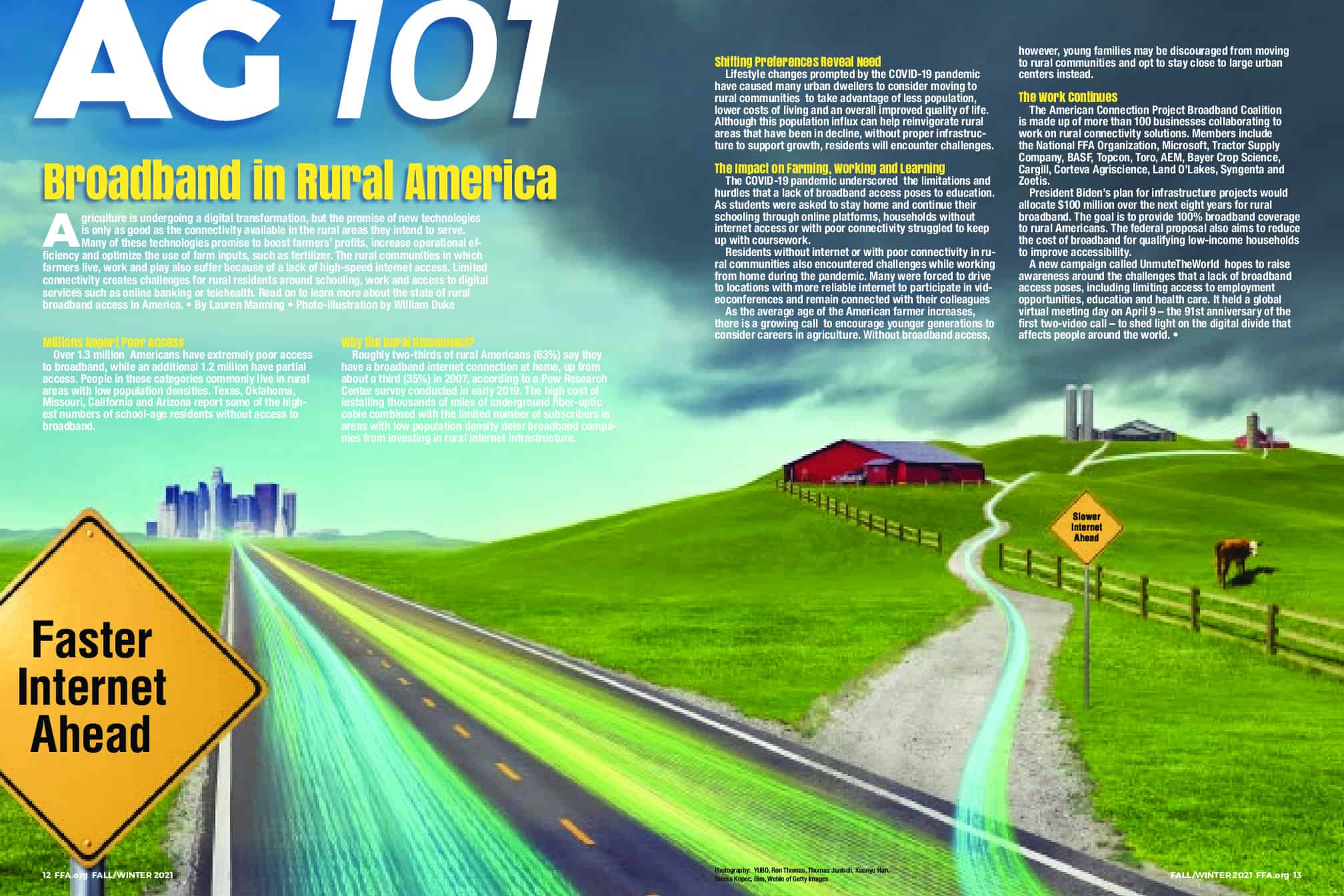Agriculture is undergoing a digital transformation, but the promise of new technologies is only as good as the connectivity available in the rural areas they intend to serve. Many of these technologies promise to boost farmers’ profits, increase operational efficiency and optimize the use of farm inputs, such as fertilizer. The rural communities in which farmers live, work and play also suffer because of a lack of high-speed internet access. Limited connectivity creates challenges for rural residents around schooling, work and access to digital services such as online banking or telehealth. Read on to learn more about the state of rural broadband access in America.
Millions Report Poor Access
Over 1.3 million Americans have extremely poor access to broadband, while an additional 1.2 million have partial access. People in these categories commonly live in rural areas with low population densities. Texas, Oklahoma, Missouri, California and Arizona report some of the highest numbers of school-age residents without access to broadband.
Why the Rural Disconnect?
Roughly two-thirds of rural Americans (63%) say they have a broadband internet connection at home, up from about a third (35%) in 2007, according to a Pew Research Center survey conducted in early 2019. The high cost of installing thousands of miles of underground fiber-optic cable combined with the limited number of subscribers in areas with low population density deter broadband companies from investing in rural internet infrastructure.
Shifting Preferences Reveal Need
Lifestyle changes prompted by the COVID-19 pandemic have caused many urban dwellers to consider moving to rural communities to take advantage of less population, lower costs of living and an overall improved quality of life. Although this population influx can help reinvigorate rural areas that have been in decline, without proper infrastructure to support growth, residents will encounter challenges.
The Impact on Farming, Working and Learning
The COVID-19 pandemic underscored the limitations and hurdles that a lack of broadband access poses to education. As students were asked to stay home and continue their schooling through online platforms, households without internet access or with poor connectivity struggled to keep up with coursework.
Residents without internet or with poor connectivity in rural communities also encountered challenges while working from home during the pandemic. Many were forced to drive to locations with more reliable internet to participate in videoconferences and remain connected with their colleagues.
As the average age of the American farmer increases, there is a growing call to encourage younger generations to consider careers in agriculture. Without broadband access, however, young families may be discouraged from moving to rural communities and opt to stay close to large urban centers instead.
The Work Continues
The American Connection Project Broadband Coalition is made up of more than 100 businesses collaborating to work on rural connectivity solutions. Members include the National FFA Organization, Microsoft, Tractor Supply Company, BASF, Topcon, Toro, AEM, Bayer Crop Science, Cargill, Corteva Agriscience, Land O’Lakes, Syngenta and Zoetis.
President Biden’s plan for infrastructure projects would allocate $100 million over the next eight years for rural broadband. The goal is to provide 100% broadband coverage to rural Americans. The federal proposal also aims to reduce the cost of broadband for qualifying low-income households to improve accessibility.
A new campaign called UnmuteTheWorld hopes to raise awareness around the challenges that a lack of broadband access poses, including limiting access to employment opportunities, education and health care. It held a global virtual meeting day on April 9 – the 91st anniversary of the first two-video call – to shed light on the digital divide that affects people around the world.












